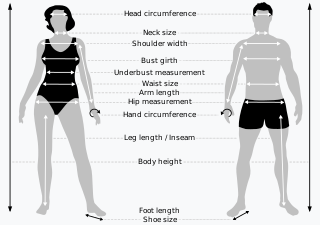Related Research Articles

British Standards (BS) are the standards produced by the BSI Group which is incorporated under a royal charter and which is formally designated as the national standards body (NSB) for the UK. The BSI Group produces British Standards under the authority of the charter, which lays down as one of the BSI's objectives to:
Set up standards of quality for goods and services, and prepare and promote the general adoption of British Standards and schedules in connection therewith and from time to time to revise, alter and amend such standards and schedules as experience and circumstances require.

Geometric dimensioning and tolerancing (GD&T) is a system for defining and communicating engineering tolerances via a symbolic language on engineering drawings and computer-generated 3D models that describes a physical object's nominal geometry and the permissible variation thereof. GD&T is used to define the nominal geometry of parts and assemblies, the allowable variation in size, form, orientation, and location of individual features, and how features may vary in relation to one another such that a component is considered satisfactory for its intended use. Dimensional specifications define the nominal, as-modeled or as-intended geometry, while tolerance specifications define the allowable physical variation of individual features of a part or assembly.

Clothing sizes are the sizes with which garments sold off-the-shelf are labeled. Sizing systems vary based on the country and the type of garment, such as dresses, tops, skirts, and trousers. There are three approaches:

Japanese Industrial Standards (JIS) are the standards used for industrial activities in Japan, coordinated by the Japanese Industrial Standards Committee (JISC) and published by the Japanese Standards Association (JSA). The JISC is composed of many nationwide committees and plays a vital role in standardizing activities across Japan.
References
- ↑ "Standards catalogue". ISO.
- ↑ "Freely Available Standards". ISO.
- ↑ World Metric Standards for Engineering. Industrial Press. 1978. ISBN 9780831111137.
- ↑ Unesco (1980). UNISIST Guide to Standards for Information Handling Part 2. Unesco. ISBN 9789231018336.
- ↑ World Metric Standards for Engineering. Industrial Press. 1978. ISBN 9780831111137.
- ↑ World Metric Standards for Engineering. Industrial Press. 1978. ISBN 9780831111137.
- ↑ "ISO 4570:2002(en) Tyre valve threads". ISO. 2002. Retrieved 8 September 2022.